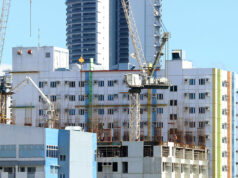SOUTHEAST ASIA needs to improve its production efficiency and deepen regional integration to catch up with evolving global trade, executives from HSBC Ltd.’s Philippine unit said Thursday.
“For ASEAN to convert its much-touted supply chain potential, the region needs to build more visibility and credibility amongst international firms particularly in their ability to handle and deliver production orders,” Michael Brennan, HSBC Philippines Head of Wholesale Banking, said in a statement.
Mr. Brennan noted that the Philippines has a rising business process outsourcing (BPO) sector while its advantages in manufacturing center on human capital in the aerospace, shipbuilding and automotive industries.
HSBC said with trade tensions and production costs rising, Southeast Asia provokes investor for the region’s growing economies and consumer markets.
“The changes in global trade are causing businesses to revisit their supply chain investment and capacity strategies but we are yet to see this convert into wide scale shifts to Southeast Asia,” Mr. Brennan said.
HSBC said that improving the country’s supply chain strategies require educating firms at government level, upgrading the regulatory framework, providing tax incentives and building better infrastructure.
HSBC also cited the need to improve transportation systems within ASEAN, promoting greater adoption of technologicy, improving skilled labor and the flow of skilled labor, increasing minimum thresholds for goods requiring certificate of origin, establishing automation of customs clearances across ASEAN states, and introducing simplified and faster clearances for low-value shipments.
It also noted the need for introducing electronic system for the payment of cross-border duties and taxes, harmonizing goods standards across ASEAN, cross-border data sharing, and linking up ASEAN countries’ payment systems.
“While trade relations between the world’s major economies like China have generally been positive and steadily growing, there is a lot of ground still to cover within ASEAN to further improve the intra-regional flow of trade and investment,” Mr. Graham said.
“Agility and responsiveness to these challenges by ASEAN governments and corporates will determine whether the region’s supply chain potential can be realized among international firms who are reexamining their options,” Mr. Graham added. — Reicelene Joy N. Ignacio



